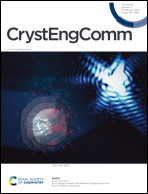Hydroxyl-assisted iodine ions intercalating Bi2O2CO3 nanosheets to construct an interlayered bridge for enhanced photocatalytic degradation of phenols†
Abstract
Promoting the charge migration and separation efficiency of Bi2O2CO3 is an appealing strategy to improve its photocatalytic performance. Herein, iodine-intercalated Bi2O2CO3 (I-Bi2O2CO3) nanosheets were prepared with the assistance of solvents containing multiple hydroxyl groups through a facile hydrothermal route. The formation process and mechanism of I-Bi2O2CO3 are illustrated. Notably, the intercalated iodine ions of the Bi2O2CO3 nanosheets could modify the band structure of Bi2O2CO3 and enhance its light response, while also acting as a bridge for efficient charge migration and separation. As a result, the resultant I-Bi2O2CO3 nanosheets exhibited superior photocatalytic performance for phenol degradation, achieving complete phenol removal within 5 h under solar illumination. Furthermore, the reaction rate constant of the I-Bi2O2CO3 nanosheets was ∼18 times that of Bi2O2CO3. We expect this work to bring new insights into the structural regulation of photocatalysts for the efficient separation of charge carriers and enhanced photocatalytic performance.



 Please wait while we load your content...
Please wait while we load your content...